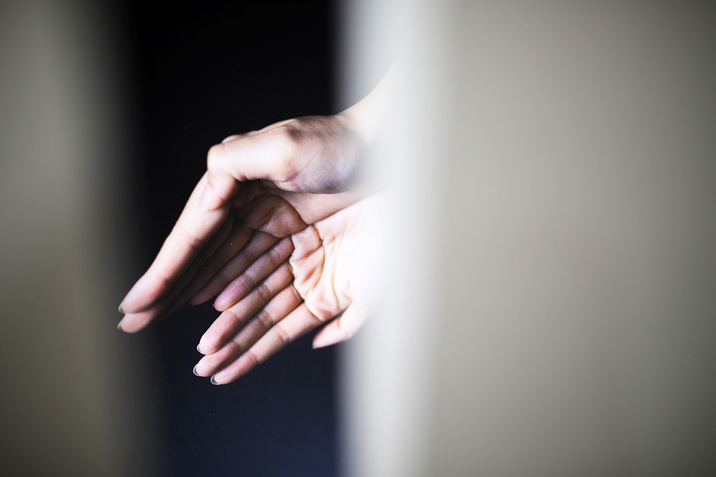
R
E
V N
E
X
T
End of an Era: Highlights From Doreen Chan’s “How to Close a Window?” at Charbon Art Space
Installation view of DOREEN CHAN’s Hand Model, 2018, inkjet print on fine art paper, wooden wall, dimensions variable, at “How to Close a Window?” Charbon Art Space, Hong Kong, 2018. All images courtesy Charbon Art Space, Hong Kong.
As one door (or window) closes, another opens. Doreen Chan’s “How To Close A Window?” at Charbon Art Space is the artist’s first solo exhibition in Hong Kong—and the gallery’s final show. Rather poignantly, the exhibition’s central subject matter is memory and mourning, closing out not just a period of personal grief over the death of Chan’s father, but also, by extension, Charbon’s time in Hong Kong.
One of the most remarkable things about “Window?” is Chan’s presence in the gallery space: in a way that is subtle but apparent from the moment one enters the gallery, one becomes aware that they have entered the artist’s world. Her installations seem to inhabit and stretch comfortably throughout the space in a quietly assertive manner, merging with the gallery.
The six works on display are deeply personal yet relatable. For Charbon’s founder and curator Lalie Choffel, Chan has found “The fragile balance between intimacy and universality . . . [that] leads the visitors into a state of vivid awakening, creating the possibility for some fragments of our own past or distant memory to come out, and an opportunity to analyze it.” All of the pieces draw from Chan’s memory and impressions rather than photographs or mementos, and she has presented them in forms she describes as most “intuitive” to her. In this way, she materializes the complex, fragmented way we remember loved ones, capturing the “very essence of remembrance [as a] cerebral and physical concept.”
This is best encapsulated in When My Best Friend Hid One of My Shoes (2018). The piece appears to be a section cut from the gallery wall (in fact, it is a wooden panel), made to tilt out towards the viewer—the eponymous window in the exhibition title—and indexes the decades-long bickering between the artist’s parents on how wide the windows in their home should be opened. Protruding from the work’s surface is a pink colored pencil with a silver shoelace hanging from it, referencing Chan’s happy childhood memories of her friends hiding her shoes in order to prevent her from leaving, thereby prolonging their playdate, as well as her father’s doting habit of tying her shoelaces. This sweet and idyllic childhood sits in contrast to her father’s habit of smoking indoors, reflected in the installation through hazy, lilac-tinted photographs of smoke which cover the surface of the wooden panel, visually representing the complex question of how we negotiate positive and negative memories involving deceased loved ones.
Installation view of DOREEN CHAN’s When My Best Friend Hid One of My Shoes, 2018, inkjet print sticker, wooden board, colored pencil, shoe, 168 x 108.5 x 6 cm, at “How to Close a Window?” Charbon Art Space, Hong Kong, 2018.
Another notable piece is If the Baby is Not a Baby (2018) featuring a looped video of the artist’s nephew blowing a raspberry into a sofa; the sound reminds the artist of her father’s characteristic soup-slurping, Chan told me. She added that when watching her nephew, she can see her father in his mannerisms in expressions, despite the two never having met. Baby is, then, a bittersweet and satisfying conclusion to this period of grieving in Chan’s life—her focus is no longer on his passing but on the wider scope of his impact, both on her life and on the extending branches of the family tree, offering a more hopeful outlook on the future.
“How to Close a Window?” is an intellectual exercise in the (de)construction of memory, yet it is also intuitive and personal, imbued with a sincerity that is palpable even without these anecdotes from the artist’s life. As we say goodbye to Charbon Art Space, take one last look at the gallery in our highlights below.
Christie Wong is an editorial intern of ArtAsiaPacific.
Doreen Chan’s “How to Close a Window?” is on view at Charbon Art Space, Hong Kong, until June 27, 2018.
To read more of ArtAsiaPacific’s articles, visit our Digital Library.






